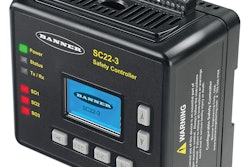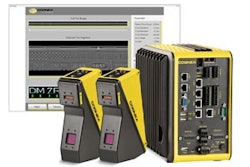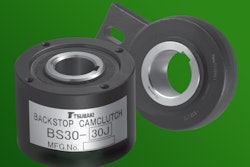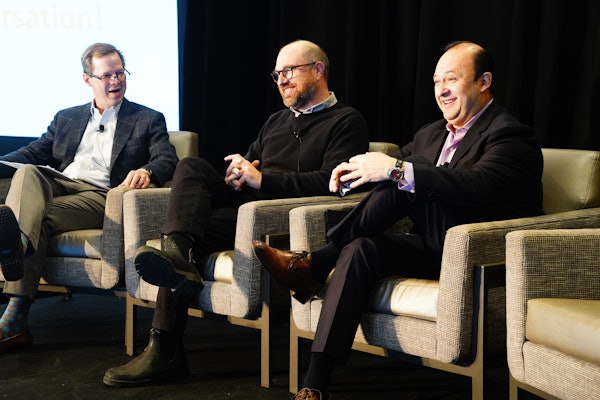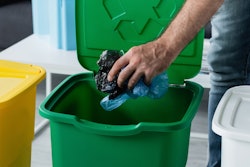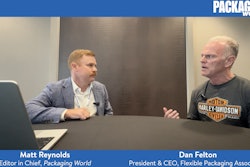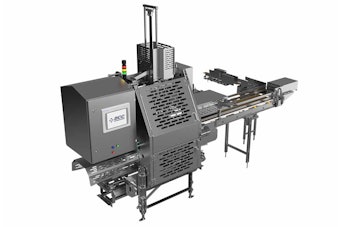
It wasn’t too many years ago that a debate was still raging among packaging machinery builders and buyers about the value of servo motion control for packaging. A walk through the 20 halls of this year’s interpack made one thing abundantly clear: that debate is over.
The widespread acceptance of servos has been driven, and rightly so, by the competitive advantage gained by machine builders and the improved performance enjoyed by end users, with both hopefully taking more dollars to their bottom lines. With this enabling technology now so widespread, one can only wonder what’s next? Where will the next significant increase in competitive advantage and performance come from for packaging? Who better to ask than the world’s leading automation providers and machine builders exhibiting at interpack?
But first, some historical context and definitions may be useful. The application of advanced motion technology for packaging machinery took a different trajectory than that taken for machine tools. Although machine tools make some very fast movements, they generally do so on single parts that move through the machines in timeframes of minutes. Packaging machines also make fast moves, but parts move through the machines in timeframes of milliseconds to seconds. The necessary computer processing power was not available to do for packaging machinery what motion control technology did for machine tools in the same timeframe. This was not because packagers were less sophisticated manufacturers, but because their problem was more complex, at least from the perspective of speed of operation.
Electronic motion control was being experimented with on packaging machines in the 1980s. As far as I know, the first public display of a machine that began to look like the digital servo driven machines of today was in the Carle booth at Interpack 1990. This was a modular, stepper-driven flow wrapper synchronized by a computer module. Other stepper and analog servo machines were on display in 1990 and evolved over time, but this machine seems to have disappeared. By the time Interpack 1993 came around, a number of servo machines began to show up. Notable for me was one from Kloeckner that utilized hardware and software from Atlanta-based Automation Intelligence. (Another example of technology developed in the U.S. being commercialized by others.) Operator interface, sequence control, and motion control were being tightly integrated on machines by several high-profile machinery companies.
By Interpack 1996, major European packaging machine suppliers had recognized the potential for this technology and began to display small “servo spoken here” signs in their booths. Legal and police actions for design infringements played out on the Dusseldorf show floor. For many of these machines, the underlying software technology was coming from the U.S., but for the most part, U.S. builders were sticking with electro-mechanical designs, a strategy that too many stuck with for too long a time. By 1996, the CPG company where I was employed had recognized the technical, cultural, and educational impediments to moving to a mechatronic paradigm in America, and we began to see the commercial playing field becoming more skewed in favor of Europe. To address this, CPGs moved to form what is now the OMAC Packaging Workgroup (see sidebar on the founding of OMAC).
One of the early deliverables of the group was the defining of three distinct generations of packaging machinery technology along with definitions of levels of automation and integration. Eventually the group published, through Packaging World, a quantitative look at the business benefits of the latest generation, referred to simply as Gen 3.
Gen 1 was defined as the standard-of-the-time electromechanical machine that might include variable speed drives, sensors, a PLC and maybe an operator interface panel. This design had been evolving for decades and had seen the use of mechanical relays, electronic logic blocks, and finally programmable devices. These variations were driven primarily by cost and support issues, quality improvements, and sometimes speed. Gen 2 was defined as machines adopting servos by applying them to these electro-mechanical designs, essentially continuing the evolution. Gen 2 machines were largely unsuccessful. They were costly and provided only marginal operational benefits. As a stepping stone, they were useful for helping builders and packagers to better understand the technology and its potential, but a more revolutionary change was required. This was the Gen 3 machine, designed from the ground up as a mechatronic, servo-based machine.
Over the dozen years since the OMAC group defined these categories, the Gen 3 machine has continued to evolve. In 2002, eight coordinated axes was considered a lot. Today machines with 108 axes are available and systems can run into multiple hundreds of axes. Not all machines need or have arrived at the same level of refinement; standards like PackML are too infrequently employed; the higher levels of integration defined in those early OMAC documents are still not universally used; and necessary education and training is not yet universally available. But virtually every machine builder is somewhere on the evolutionary path of Gen 3 machines. This brings me back to Interpack 2014 and the question, “What’s next?”
Mathematical modeling
Patrich Marchion is a mechatronics engineer with Swiss machine builder Dividella, which makes Gen 3 machines with high axis counts for the pharmaceutical industry. Marchion believes that the next breakthrough will occur when engineers rely more heavily on mathematical modeling for designing machines. This will be a fundamental transformation of machine design from an art to a science. I have heard a similar idea expressed before from some of the more sophisticated consumer packaged goods companies, those who still rely on their own internal machine design departments for development of machines for their proprietary processes. Performance breakthroughs do come from end users who are not constrained by time and cost concerns when it comes to optimizing the most key machines in their operations. Much more can be done in terms of improving performance if machine designs are subjected to rigorous dynamic modeling to identify resonances and other factors that limit performance. Many designers have made the transition to 3D CADD models, but these are largely static models that help with optimization of part geometry. Taking these static models to dynamic models that embed the complex mathematical relationships of the materials, components, and systems may be a means of achieving break-through performance. There are a lot more opportunities to optimize both the component designs and the drive software to obtain superior performance.
As I mentioned this idea to technology providers, many expressed a belief in dynamic modeling becoming more common in the packaging machinery industry and providing some breakthroughs in performance. They report that only a handful of machine builders are currently taking advantage of mathematical modeling. They also stress the increasing ability of the drives themselves to optimize the machine dynamics. Bosch Packaging was touting a new generation of delta robots that have improved kinematics due to new software. Bosch-Rexroth showed their drives’ ability to detect and suppress vibration. B&R also spoke of suppressing vibration and compensating in real time for the system dynamics. Schneider Electric suggested eliminating the servo motor cogging by using feed-forward and other advanced control loop strategies within the drive. Beckhoff sees a need to model motors, drives, and machines. Both Schneider and Beckhoff stressed advantages to speed. Beckhoff mentioned the need for high precision, high performance synchronization in time frames of 100 nanoseconds, enabling builders to have reaction times in their machines of 60 microseconds. Schneider also sees benefits from being able to change the motion profile of an axis within every cycle of the machine, taking advantage of higher-speed networks and processors. The limiting axis of the machine may change as conditions change, and being able to detect this during runtime and adapt to it could be a game changer. Lief Juergensen of Schneider says that their controllers are able to change a cam profile within one cycle of the Sercos network.
Integration is the key
As machines reach the limits of increasing speed, some believe that more performance improvements will come from system optimization than from machine optimization. Having machines utilize those higher level integration strategies defined early on by OMAC will enable machines to talk with one another and with their human overseers to benefit from improved planning, reduced downtime, and better overall performance of entire packaging legs, cells, or lines. Most of the engineers that I spoke with expressed support for the belief that the next breakthrough will come with the full integration of information from the top floor to the shop floor.
Some of this is in place already. For example, onboard drive diagnostics get passed up from the bottom through software functionality such as that offered by B&R’s System Diagnostic Manager. From the opposite direction, orders get passed down from the top level ERP system to at-line or in-line printers to enable order quantities as small as one. In both cases, integration is the key.



